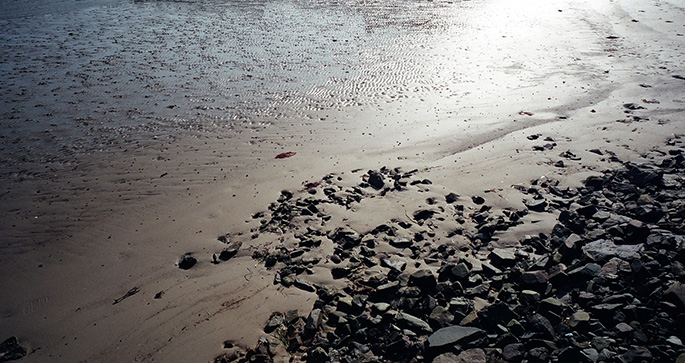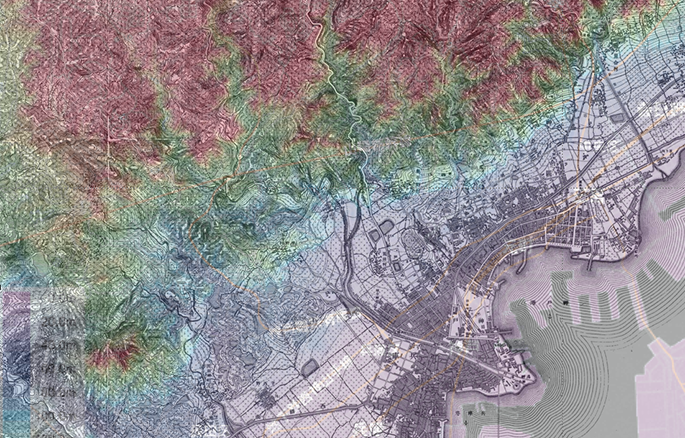Two main research concepts
Two key concepts of the research are "Human history on water's edge(汀の人文史)" and "Considering architecture and cities throughout terrain, geology, and earth conditions(地-質からみる建築と集住体)"
Human history on water's edge

The concept of "human history on the water's edge" can be broken down into three points. That is,
1) Cities in the world are mainly formed on flat land near the water. Its history of formation and configuration of the city need to be tested.
2) The edge of the water is a location related to the essential and historical function of the city, which is exchange. It has been contributed to creating prosperity for the city, while acquiring its character since its inception. But we must bear in mind that it is also an unstable and fragile land facing disasters such as floods and tsunamis.
3) The water’s edge is a zone of ambiguity. It sometimes appears as land and at other times as a water surface.
These versatile and contradicted characters of the edge extracted from these points of views help us to understand other topics on boundaries in the spatiality of cities and architecture - e.g., spatial issues between body/objects, room/building, inside/outside, city/rural area, national border/language regions, and nature/artifact.
Considering architecture and cities throughout terrain, geology and earth conditions

The concept of "Considering architecture and cities throughout terrain, geology and earth conditions” raises several questions.
The first question is how humans have perceived their environment, or to say, the world, and how they had settled in the land.
The next question is how people had built their dwellings and settlements. The question is tested from multi-discipline aspects such as materials, construction methods - that belong to architecture - and soil, water system, vegetation, and climate - that are objects of geology that emerge at the intersection of landscape or meteorological elements. These questions have arisen from a wide perspective of time, looking at the history of humans being reacting, building, and changing their living environment. Perhaps modern and contemporary architectural design and city planning have not paid attention to these topics. Questions will provide an important historical starting point for thinking about future architecture and cities.
Another point of the question is to describe how people have divided the earth and soil into territories. Private ownership and commons are also examined here.
